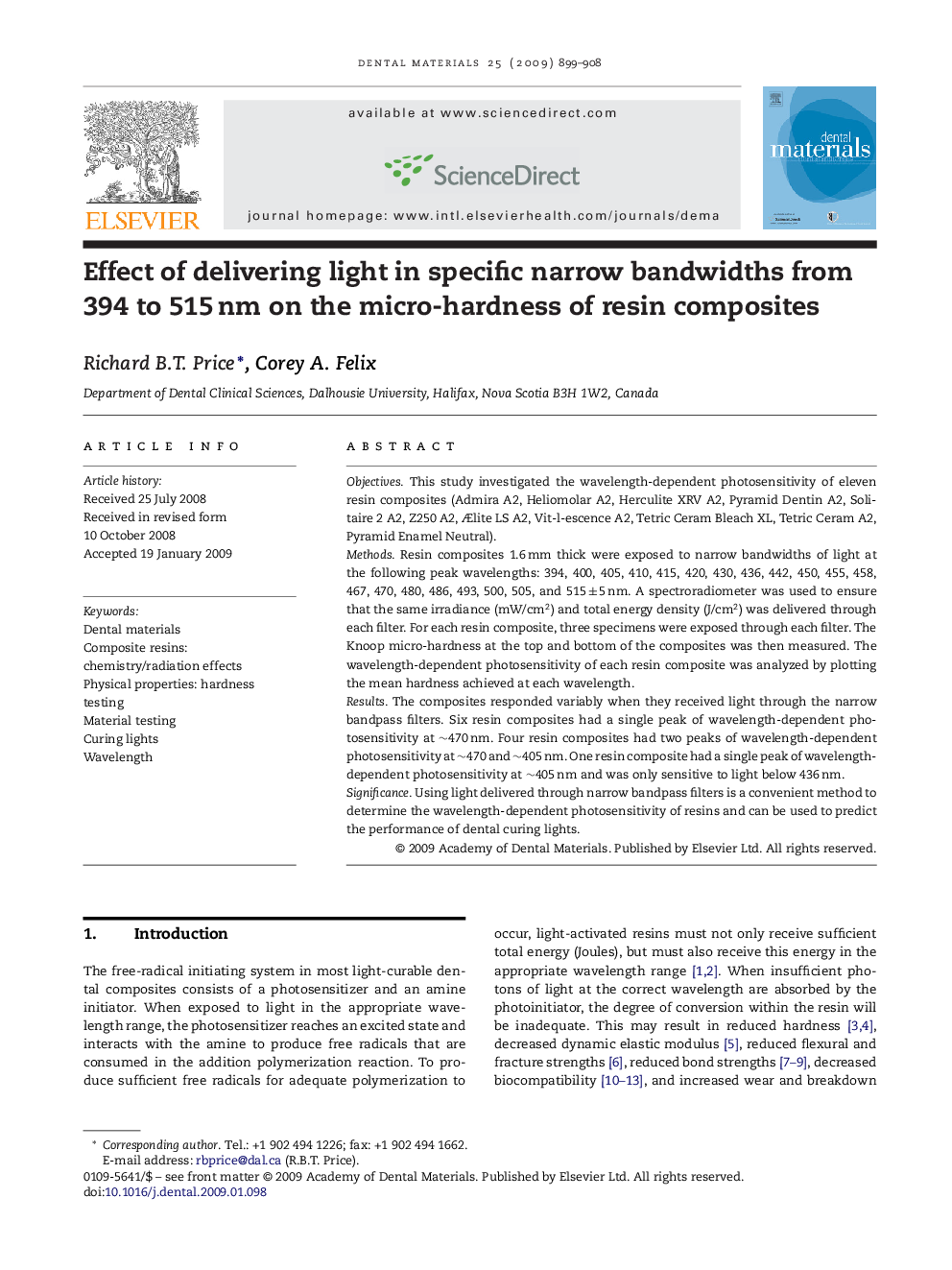| Article ID | Journal | Published Year | Pages | File Type |
|---|---|---|---|---|
| 1422147 | Dental Materials | 2009 | 10 Pages |
ObjectivesThis study investigated the wavelength-dependent photosensitivity of eleven resin composites (Admira A2, Heliomolar A2, Herculite XRV A2, Pyramid Dentin A2, Solitaire 2 A2, Z250 A2, Ælite LS A2, Vit-l-escence A2, Tetric Ceram Bleach XL, Tetric Ceram A2, Pyramid Enamel Neutral).MethodsResin composites 1.6 mm thick were exposed to narrow bandwidths of light at the following peak wavelengths: 394, 400, 405, 410, 415, 420, 430, 436, 442, 450, 455, 458, 467, 470, 480, 486, 493, 500, 505, and 515 ± 5 nm. A spectroradiometer was used to ensure that the same irradiance (mW/cm2) and total energy density (J/cm2) was delivered through each filter. For each resin composite, three specimens were exposed through each filter. The Knoop micro-hardness at the top and bottom of the composites was then measured. The wavelength-dependent photosensitivity of each resin composite was analyzed by plotting the mean hardness achieved at each wavelength.ResultsThe composites responded variably when they received light through the narrow bandpass filters. Six resin composites had a single peak of wavelength-dependent photosensitivity at ∼470 nm. Four resin composites had two peaks of wavelength-dependent photosensitivity at ∼470 and ∼405 nm. One resin composite had a single peak of wavelength-dependent photosensitivity at ∼405 nm and was only sensitive to light below 436 nm.SignificanceUsing light delivered through narrow bandpass filters is a convenient method to determine the wavelength-dependent photosensitivity of resins and can be used to predict the performance of dental curing lights.
